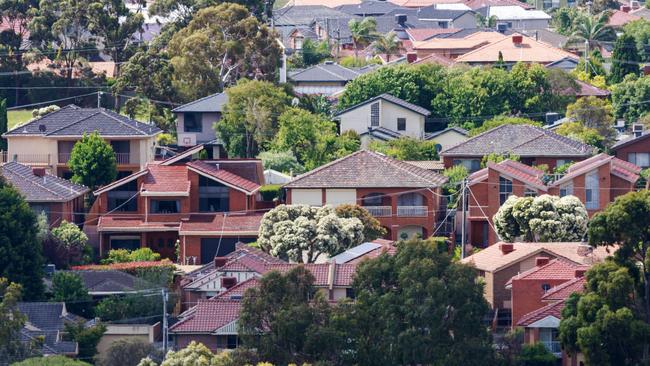Half of homeowners lock in longer loans, cheaper repayments
More than half of homeowners who refinanced in the past month choose to extend their loan to get cheaper repayments and some mortgage relief, new data from Lendi shows.

Half of all borrowers looking to refinance are extending their mortgage term to reduce their minimum payments in light of 12 rate rises, analysis from Lendi Group has shown.
The online mortgage platform found 51 per cent of mortgage holders who refinanced last month took on a longer term, on par with levels recorded over the past six months.
The Reserve Bank’s decision on Tuesday’s to lift the cash rate a further 0.25 per cent added approximately $76 to the average monthly mortgage repayment. Since the first increase in May 2022, interest rates are up 400 basis points, adding $15,168 to annual loan costs.
Lendi Group chief product officer Travis Tyler said many homeowners extending the term of their loans were doing so as they had little choice due to the 3 per cent “serviceability rate” used by most lenders to check if borrowers can repay.
“A 3 per cent serviceability buffer on a 5 per cent interest rate is impossible for many homeowners,” Mr Tyler said.
About 880,000 borrowers are expected to come off of ultra-low rates secured in the early days of the pandemic. In October 2021, the banking regulator, the Australian Prudential Regulation Authority, ordered lenders to assess borrowers’ capacity to service a loan at the interest rate plus 3 per cent to protect buyers from overextending.
Now a mortgage holder with a loan of $600,000 on a 5 per cent interest rate would be assessed on whether they could afford repayments at 8 per cent, or $4630 a month.
Mr Tyler believes that dropping the rate would help people enter the market, noting a serviceability test at 6 per cent – one percentage point above the lending rate – which some lenders are offering would bring that test down to $3685 a month, therefore being serviced at 20 per cent less, or the equivalent of a $765 difference per month.
“By dropping the buffer, it unlocks an additional 20 per cent in borrowing capacity, allowing brokers to help these eligible Australians search for a lower rate than the one they are currently paying,” he said.
Mark Bouris, founder of mortgage brokerage Yellow Brick Road, says the number of people refinancing has fallen considerably in recent months as the rate cycle approaches the top.
“Statistically, the refinance market has come off significantly in the last two months,” Mr Bouris said. “Across the board for us these days, probably 60 per cent of all our business is refinancing and we’re seeing a lot less people qualify.”
However, PropTrack’s director of economic research, Cameron Kusher, said that while the buffer should be assessed regularly, it was unlikely to be changed anytime soon.
“I personally don’t think that they (APRA) will adjust the buffer rate until such time as the interest rate has peaked,” Mr Kusher said.
“And the fact that prices are rising maybe gives them pause for thought about whether they need to adjust the buffer at all at the moment.”
Property prices have been rising over the first five months of the year, with the market on track to record positive annual growth next month. At the market’s current trajectory, national home prices will surpass previous pandemic highs as soon as January.




To join the conversation, please log in. Don't have an account? Register
Join the conversation, you are commenting as Logout